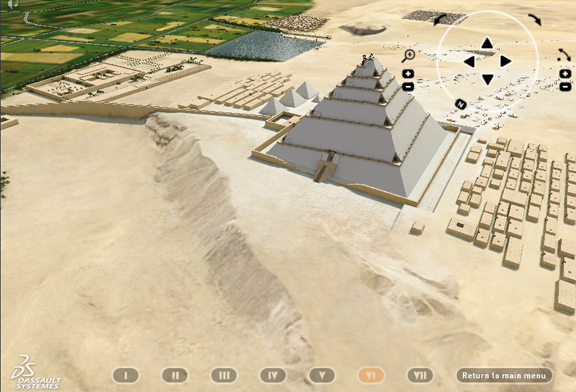Latest News
November 12, 2010

For the record, I’m not in favor of spawning new terms with a forced marriage between a pair of words that aren’t ready to come together. On the other hand, I think terms like advergaming or edutainment legitimately belong in our vocabulary, sine they’re bred in the dual-purpose cultures that straddle advertising and gaming or education and entertainment.
But does a product lifecycle management (PLM) software maker belong in advergaming or edutainment? Bernard Charles, CEO of Dassault Systemes (DS), thinks not only does his company belong there, it’s poised to drive those industries. Having championed the use of 3D mock-ups in nearly every aspect of PLM (DS didn’t do it alone; it had help from competitors like Autodesk, PTC, and Siemens PLM Software), the company now proposes a way to extend the use of those 3D assets beyond manufacturing—to create interactive lifelike experiences in branding, education, and entertainment.
Interactive Experiences via 3DVIA
Charles isn’t suggesting DS will get into the business of creating the next Tomb Raider or Call of Duty. These franchises are the territories of hardcore game publishers and game engines. But the popularity of Facebook apps like FarmVille proves there’s room for growth, not just for entertainment but also for branding. DS’s shortcut into the market is via 3DVIA, a suite of consumer-friendly 3D model and scene authoring tools.
Among the early proof of concepts created using 3DVIA Virtools, a game development and deployment platform, is the multimedia-driven edutainment portal Khufu Revealed, which explains the French architect Jean-Pierre Houdin’s theory of how the great pyramid of Giza might have been built. The project involves the use of DS CATIA (for digital mockup of the pyramid at 1:1 scale), SIMULIA (for determining how and when the beams above the King’s chamber might have cracked), and DELMIA (for simulation the Egyptian laborers’ workflow). But the heavy lifting in the end was actually accomplished in the lightweight (compared to CATIA) 3DVIA, responsible for generating the delivering much of the game-like animation sequences that now hosted at the site.
More recently, DS helped Nestle deliver an interactive bike-racing game in a box, quite literally. If you can get a hold of a Nestle Chocapic cereal box (currently available only in Europe), you can detach the pop-out stereoscopic goggles and the marker to experience a roller coaster ride (see embedded YouTube video below).
“Lifelike experiences—this is what we will be doing for the next 10 years,” declared Charles as he addressed the crowd at the conference.
Window Shopping For the Next Generation
With its 3DVIA portfolio, DS is also keeping an eye on the mobile device market and social networks, evident in the plug-ins it offers for iPhone, iPad, and Facebook app development. In early October, the company added drag-and-drop stereoscopic scene rendering to 3DVIA Studio.
“Including this feature in the free 3DVIA Studio offer is another example of our commitment to empower anyone to build lifelike 3D games and applications,” said Lynne Wilson, CEO, 3DVIA, “The stereoscopic 3D feature opens doors not only for developers, but the average consumer.”
Some retailers like French luxury good merchant EspaceMax have begun experimenting with 3DVIA-driven scenes as a way to lure online shoppers. For a handful of designer handbags and purses, EspaceMax lets online shoppers rotate, inspect, and drag and drop items into virtual models of the products. (To check out this feature, visit EspaceMax here.)
Browser-based 3D app is a quest that has attracted, among others, Google and Autodesk. Whereas the search engine giant is pushing for developers to adopt its free API O3D, Autodesk expects to deliver web-based rendering and visualization apps, to be used in interior decoration, real estate, and architecture sales.
Delivered almost directly to general consumers, these apps were not previously the playground of professional 3D software makers like DS and Autodesk. But the ever-expanding definition of PLM seems to have brought the technology to the consumer’s front door. DS customers now stand ready to cross the threshold, through the display monitor into a buyer’s heart and mind—and wallet.
For an example of an interactive experience, watch the video below demonstrating the Nestle branding campaign.
Subscribe to our FREE magazine, FREE email newsletters or both!
Latest News
About the Author
Kenneth Wong is Digital Engineering’s resident blogger and senior editor. Email him at [email protected] or share your thoughts on this article at digitaleng.news/facebook.
Follow DE






